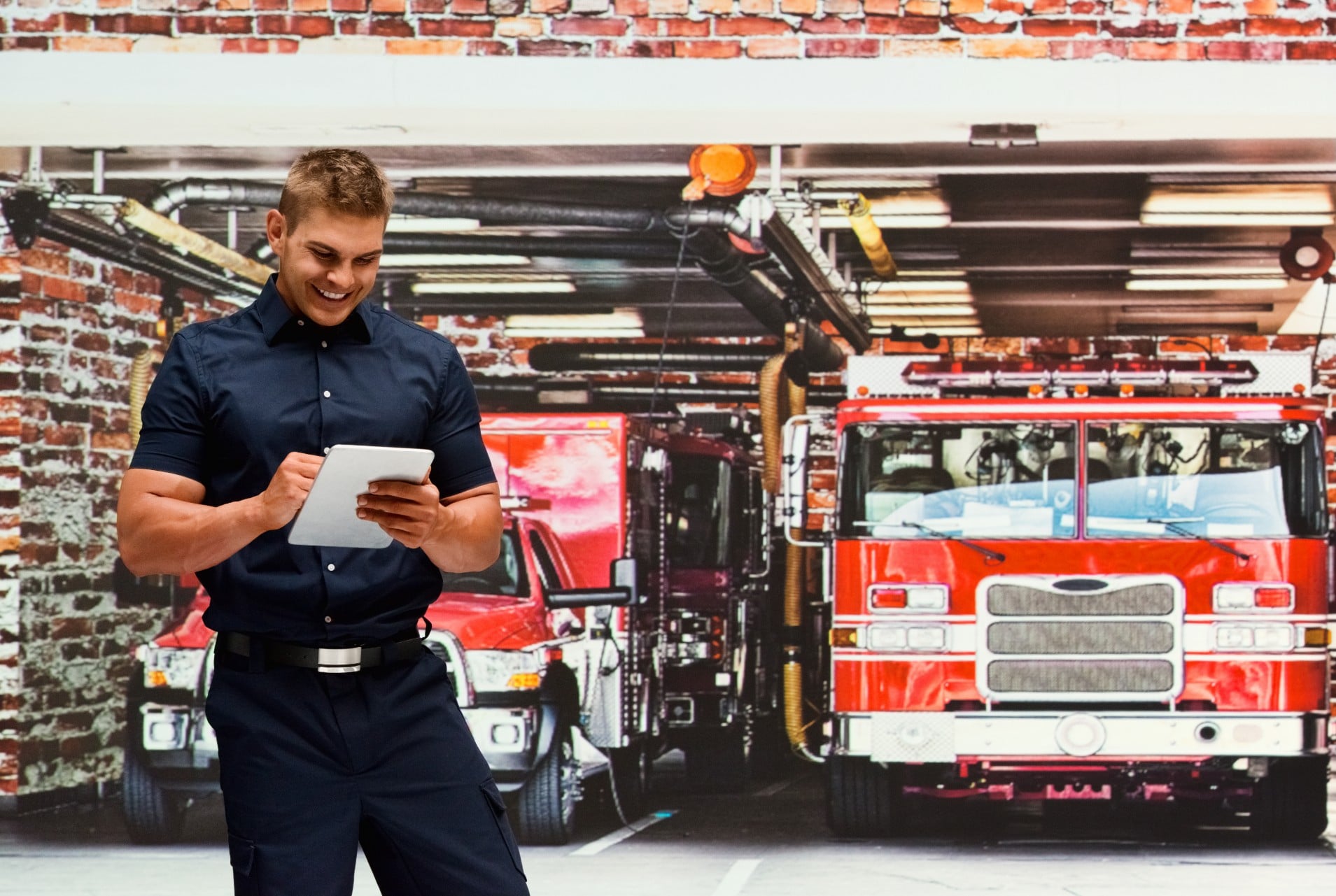Firefighter Social Distance Training Tips and Solutions
 COVID-19 has presented new challenges for those of us in the fire service. If you’ve been in the service for several years, you know this isn’t the first time we have adapted the way we do our jobs in response to a health crisis. After 9/11, we faced anthrax scares. In the past decade, we’ve navigated H1N1 and Ebola, and we can navigate COVID-19, too.
COVID-19 has presented new challenges for those of us in the fire service. If you’ve been in the service for several years, you know this isn’t the first time we have adapted the way we do our jobs in response to a health crisis. After 9/11, we faced anthrax scares. In the past decade, we’ve navigated H1N1 and Ebola, and we can navigate COVID-19, too.
Social-distancing rules, quarantine, and isolation mean we have to adjust the way we work and the way we train. Here are a few ideas from fire service teams across the country that you may consider implementing in your station.
Maintaining Social Distancing During Training
Social distancing rules mean making adjustments to the way we conduct fire training at all levels. Here are a few suggestions to consider:
- Limited numbers, maximum distance. Some departments are choosing to limit training sessions to less than 10 professionals and the instructor. These classes can be held in a large space to allow for adequate distance or outside to provide even better airflow. Masks and other PPE can be worn as well.
- Live video. Use live video conferencing or streaming to share training with your crew. Everyone can remain safely at home but still participate in real-time. Some training platforms, like CareerCert, provide easy ways for you to create, distribute, and track this training as well as provide assessments to assure all your team is on the same page.
- Create digital documents. Services like Google Docs or Microsoft OneDrive allow you to create handouts, quizzes, or interactive assignments. Again, some training platforms, like CareerCert, allow you to easily distribute these materials and track who has completed the training online in one easy place.
Take Advantage of Online Training
Completing firefighter courses online is another excellent alternative to traditional training courses. Whether you utilize YouTube videos, free online materials, or an accredited training platform, these resources can help you sharpen your skills and stay prepared to protect your community.
Online firefighter training through CareerCert means everyone on your team—leaders, personnel, instructors, DICOs, medical providers, drivers, etc.—has access to critical training, CEs, safety courses, and certifications. Not only can you refresh the basics, you can also take industry-leading new courses, track your team’s compliance, disseminate department-specific training, and easily report on all of your team training in one easy place.
Training with CareerCert also means your personnel can complete courses at their own pace and in the comfort and safety of their own home or at the station, limiting the risk of exposure and helping to keep your team safe.
Protocols for the Pandemic
Beyond social distancing, pandemic protocols can be put in place to help protect your team and ensure that we are prepared to continue to serve under these new circumstances.
A great place to start is making minor adjustments to operations. You may consider working with your reporting service to institute a practice of screening calls for COVID-19 symptoms, when appropriate, so that responders can be prepared and vigilant. Some teams have also chosen to send a smaller amount of personnel to assess each patient in a non-fire scenario to minimize exposure.
In accordance with guidelines from the CDC, all personnel should wear personal protective equipment (PPE), including:
- A disposable gown
- Gloves
- Eye protection
- N95 respirator/mask
In our stations, we must also be vigilant in our cleaning methods and hygiene habits. At least twice a day, there should be a thorough cleaning and spray down of surfaces, equipment, bunk rooms, and vehicles. Be sure to use approved cleaners that fight off viruses.
Sources
- Coronavirus Disease 2019 (COVID-19). Centers for Disease Control and Prevention. Accessed on Jun 3, 2020. https://www.cdc.gov/coronavirus/2019-ncov/hcp/using-ppe.html.
- Frodge T. COVID-19: Simple steps firefighters can implement today. FireRescue1. Mar 18, 2020. https://www.firerescue1.com/coronavirus-covid-19/articles/covid-19-simple-steps-firefighters-can-implement-today-rdpwgkjdXjdIQLPt/.



